Last Updated on September 5, 2023 by Michelle
I told someone the other day that we’re “pig farmers” and kinda startled myself.
We are nearing the end of our second year of raising and processing our own pasture-raised pork (more about processing pigs here) and wow does it feel good to be able to call ourselves “pig farmers.”
We’ve learned a lot these past two years…
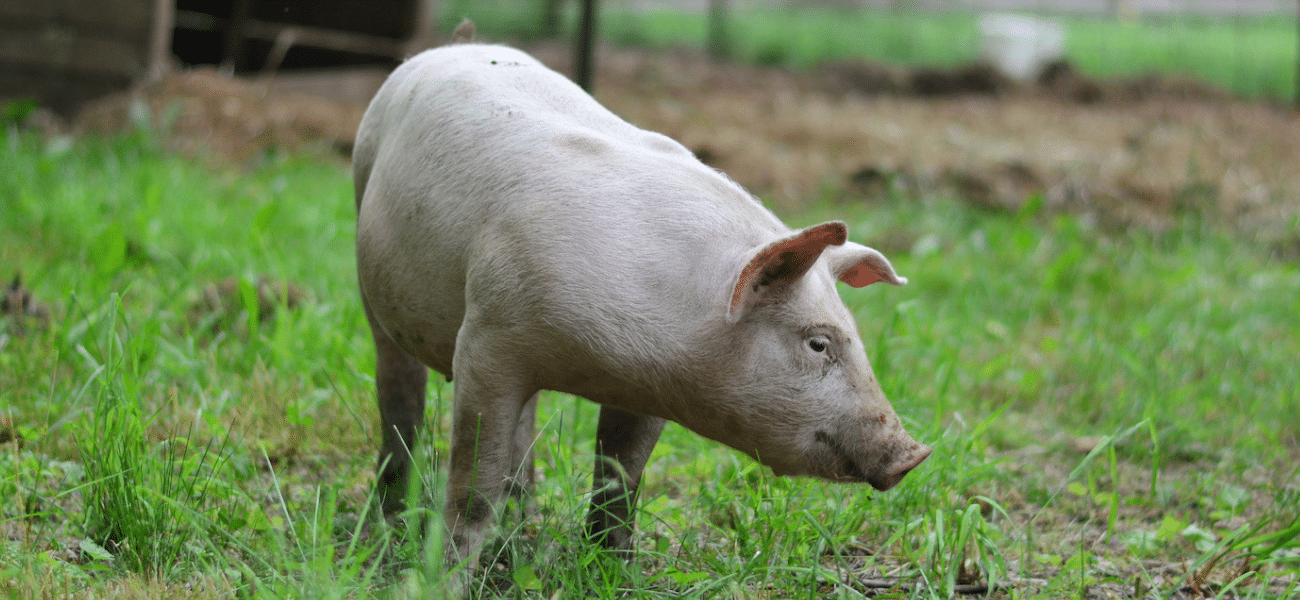
How to Raise Pigs on Pasture
If you’re just starting out on the exciting adventure of raising your own pork, your first step will probably be choosing your pig breed.
Choosing What Pig Breed to Raise
Things you may want to consider when choosing what pig breed (or crossbreed) to raise:
SIZE
You may want smaller sized, to be easier to control, or larger, for more food when processed.
AGE AT MATURITY
Different breeds mature at different rates. The longer a pig takes to reach market weight, the more feed it will consume, which of course increases the cost of the average meal you’re putting on your family’s table. Also, if you live in a climate, like we do, with a short summer season, there’s great advantage to growing your pigs out before cold weather sets in. During cold months, pigs eat more and conserve all their energy to stay warm and they won’t put on weight, which means higher feed costs and less meat in your freezer.
TEMPERMENT
If you have small children you may want to search out the calmest, friendliest breeds.
FORAGING ABILITY
Two benefits to pigs who forage well? You spend less money in pig food and the meat is improved in flavor. A few breeds that are known to excel at foraging: Berkshire, Tamworth, Mulefoot, and Choctaw. But keep in mind that pigs, in general, are great foragers.
MEAT FLAVOR
Believe it or not, there is a slight difference in taste among breeds. You may want to consider a heritage breed if you prefer a distinct meat flavor. Bonus, you’ll be helping to preserve the blood lines.
ENVIRONMENT PREFERENCES
It’s especially important to know the breed is well suited to your climate.
What breed of pig do we raise on pasture?
We choose to raise a crossbreed. The piglet survival rate and growth is excellent with many crossbreeds and, in short, cross breeding can produce heartier, healthier offspring with fewer health issues.
Yorkshire/Landrace/Duroc crosses are very successful for us, here in New England.
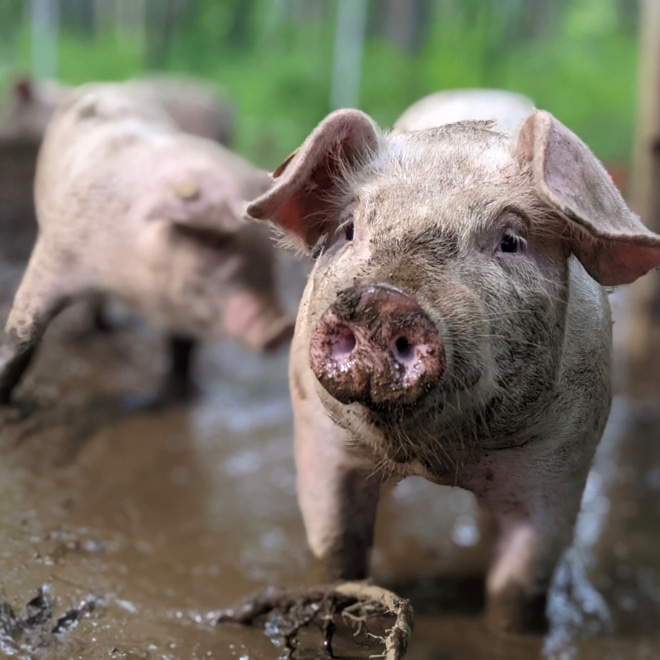
Raising Pigs on Pasture–What Works Well
Three things come to mind that we did right out of the box that worked very well for us:
How to Introduce Pigs to Electric Fencing
We gradually introduced the piglets to the electric fencing.
The first week, we put the piglets inside a cattle fencing area we had set up. Week two, we installed electric fencing inside the cattle fencing.
This way, when they got zapped they had to respond by backing away, since the fencing was on the other side. If we just installed the electric fencing from the beginning (without a cattle fencing barrier outside the electric) they would quickly learn (pigs are smart) that they can push through the zap of pain and be on the other side.
But by the time they are a month old, we can have a much larger pasture area ready for them to free-range that is completely surrounded by only electric fencing. Since they learned to back up when they feel (or just smell) the electric, they never test the boundaries.
This way it’s easy for us to take them to new pasture or wooded area whenever they’ve exhausted their food supply or we just want another area cleared. (Pigs are amazing at clearing a field. More on this below.)
How to Feed Pigs on Pasture, Automatically
We set up a 2-bin auto feeder. All we had to do was check in on how filled it was a few times a week and the food stays nice and dry yet the pigs can feed on demand. This is one like ours, just a single feeder.
How to Ensure Pigs on Pasture Have Access to Fresh Water
We installed stainless steel, automatic water nipples on a giant lidded tub so the pigs had free access to clean water and we only have to refill the tub a few times a week.
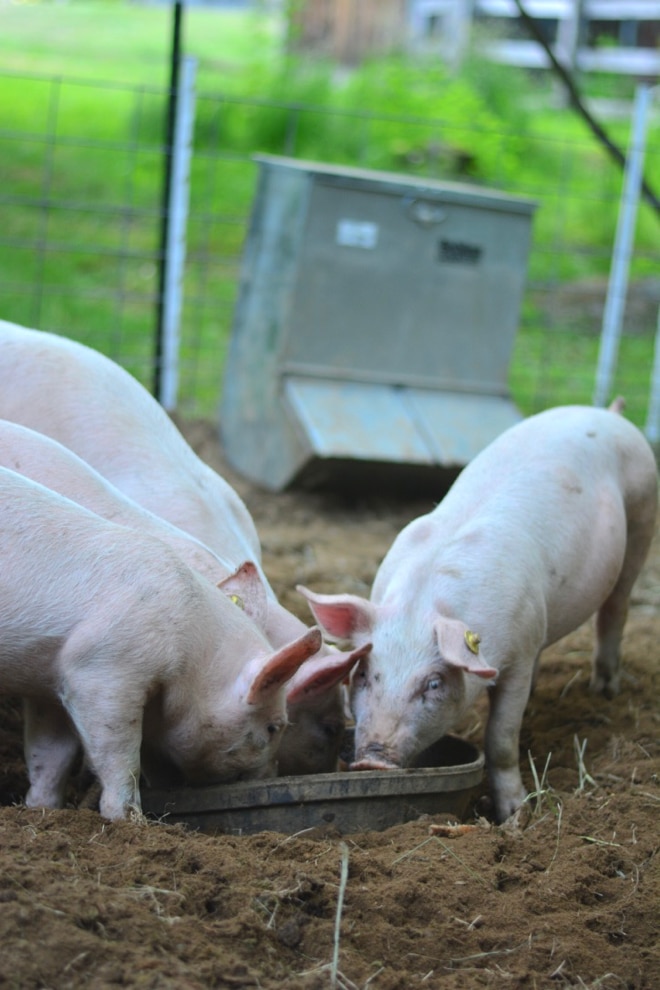
Raising Pigs on Pasture–What We’ve Learned
Things we regretted the first year, that we improved this year:
Keep Close Tabs on Food Costs
This spring when we brought home the piglets, I told Bill I was going to keep close track, from day 1, of all our expenses. So I have been the keeper of receipts, but Bill knows his proclivity to loose those little annoying slips of paper, so he had a backup plan. He kept every single bag after emptying out the food and just sat down this afternoon and counted them.
All 123 bags.
So it cost us $2,140 in food for our 5 pigs this year.
It will be good to know, for our own purposes, exactly what each pound of meat in our freezers is costing us.
In addition, family members who are eager to cover the costs for raising 1/2 pig can do so accurately when we load up a few shelves of their freezers with delicious farm-raised meat.
We will also have a better gauge to judge if we’re getting the fair end of the deal if we trade meat cuts with other local farmers, such as my friend who raises sheep, another who has cattle, and a hunter friend who would love to trade pork for venison.
Use the Pigs to Clear Wooded Areas
We had every intention of doing this the first year, but honestly those first 6 months we had pigs on the farm flew by and we kept saying, “we need to try to move the pigs soon,” and “soon” never came.
But they are great at rooting up unwanted shrubs and brush and sticker bushes and they happily cleared a large area of our woods this year.
The best part? Foraging keeps the pigs super happy. Happy pigs means happy future bacon, right?
Source Your Pig Grain in Bulk
Don’t know why we didn’t even think of this the first time around, but when our pigs were full-size last year we were feeding the 3 of them almost a bag of food a day. That’s a lot of runs to Tractor Supply and too much money.
Sadly, in our area, in central New Hampshire, after a few months of researching we couldn’t find a bulk source for our pig grain. We were hoping to go fill up our truck bed with loose grain and store it on our farm, hoping to save a lot of money and trips to Tractor Supply.
The only option we found like this was actually more expensive than the route we went, which was a bulk order from Tractor Supply. We saved a buck or two per bag and only had to make one trip. Mind you, that was one loaded pickup bed, and a lot of work unloading it into the barn when we got home, but it was well worth it.
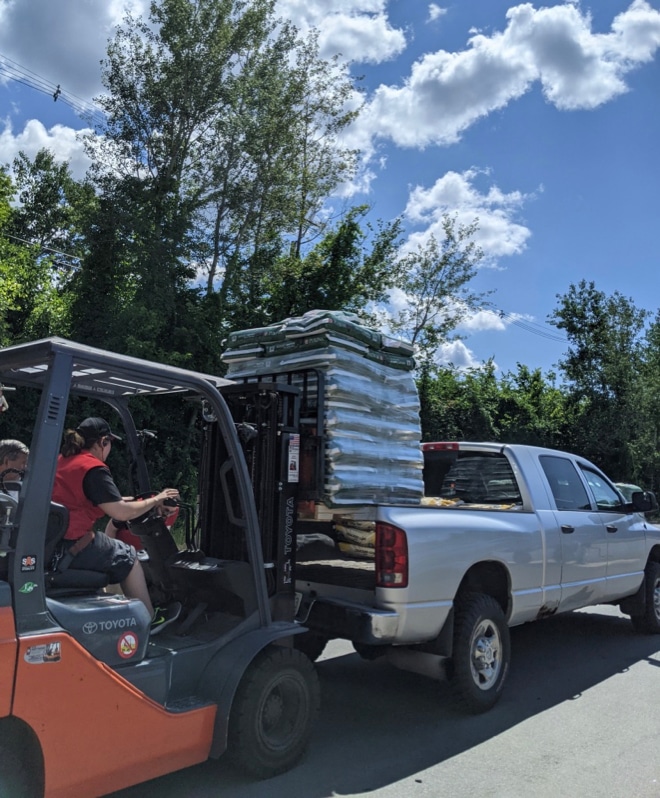
Answers to your questions about pasture raised pigs…
A few common questions I get…
How long does it take to pasture raise a pig?
The crossbreed we raise takes 5-6 months until it’s full grown and ready for processing. Read more here about how to process pigs at home. But the answer to this question varies, depending on the breed and many other factors. In general, in 7 months, under average circumstances, a pasture-raised pig will be full-grown.
How many acres do you need per pig to pasture?
Pigs are amazing animals how well they can thrive and content they can be in a rather small area. Don’t let amount of land intimidate you or keep you from trying your had at raising pigs. If you only have a small area for them, plan on supplementing their diet with a lot of table scraps (local grocery stores or food banks will often give pig farmers their expired foods).
Will pigs destroy pasture?
Pigs are amazing at clearing land. If you have an overgrown field or even a wooded area you need to clear, pigs will do the work for you. They quickly root up all grass and underbrush and eat all plants and small shrubs. Bonus, foraging is enrichment activity for them and makes for very happy pigs (which leads to better tasting meat for your freezer).
But they don’t “destroy” a pretty pasture, in the sense that one year later you will never know they were there and your pasture will be lush and green again after you have moved the pigs on to another area.
Can you raise pigs on just pasture?
Growing pigs need lots of protein. While the nuts and underbrush of a forest, or lush grass and plants of a field, that they are allowed to graze in are very good for them, you will need to give them free choice of a high-quality grain, to make sure they’re getting their protein they need.
Some PIG highlights on my instagram that you may like:
This highlight shows us brining the piglets home, letting them out to pasture after they were trained on the electric, and what a great job they did clearing our woods.
And this highlight gives you a tour of the pig area, explains how to train pigs on electric, and shows you our feeding and water systems.
Want Some Amazing Pork Recipes?
Sign up for my weekly-ish encouragement in your inbox and I have some of my favorite pork recipes waiting for you to download instantly. It will take you one hot second and those recipes will be on their way to you… Just type in your email right here –>
Other Articles You’ll Enjoy:
A Homestead Checklist for Every Season
All My Favorite Homestead Products (and more)
Talk to me!
If you have any questions, leave a comment below. And please tag me (with the hashtag #simpleDIYkombucha) on ig to show me your farm animals or pasture raised pork meals @souly.rested.
Pin this for later!
Click on the image below to pin this post.
“He satisfies the thirsty and fills the hungry with good things.” Psalm 107:9
Find out why SoulyRested was considered to be one of the One of the Top Homesteading Blogs.
Glance at my Resource Page if you’d like to get a glimpse of all the supplies I use and recommend for everything from gardening, to homeschooling, to chicken care, to nature journaling, to maple syrup making.
I’d love to connect!
To find me in some other neck of the woods, just click any (or every!) icon below:

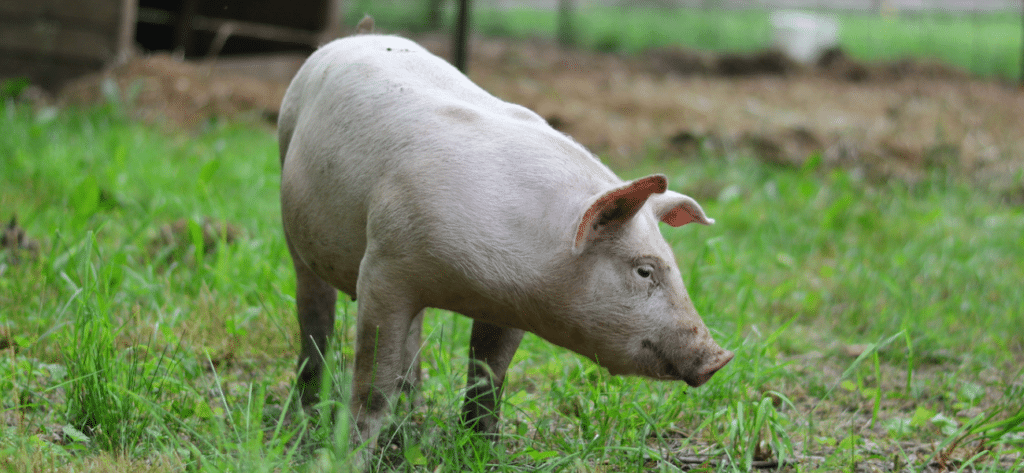
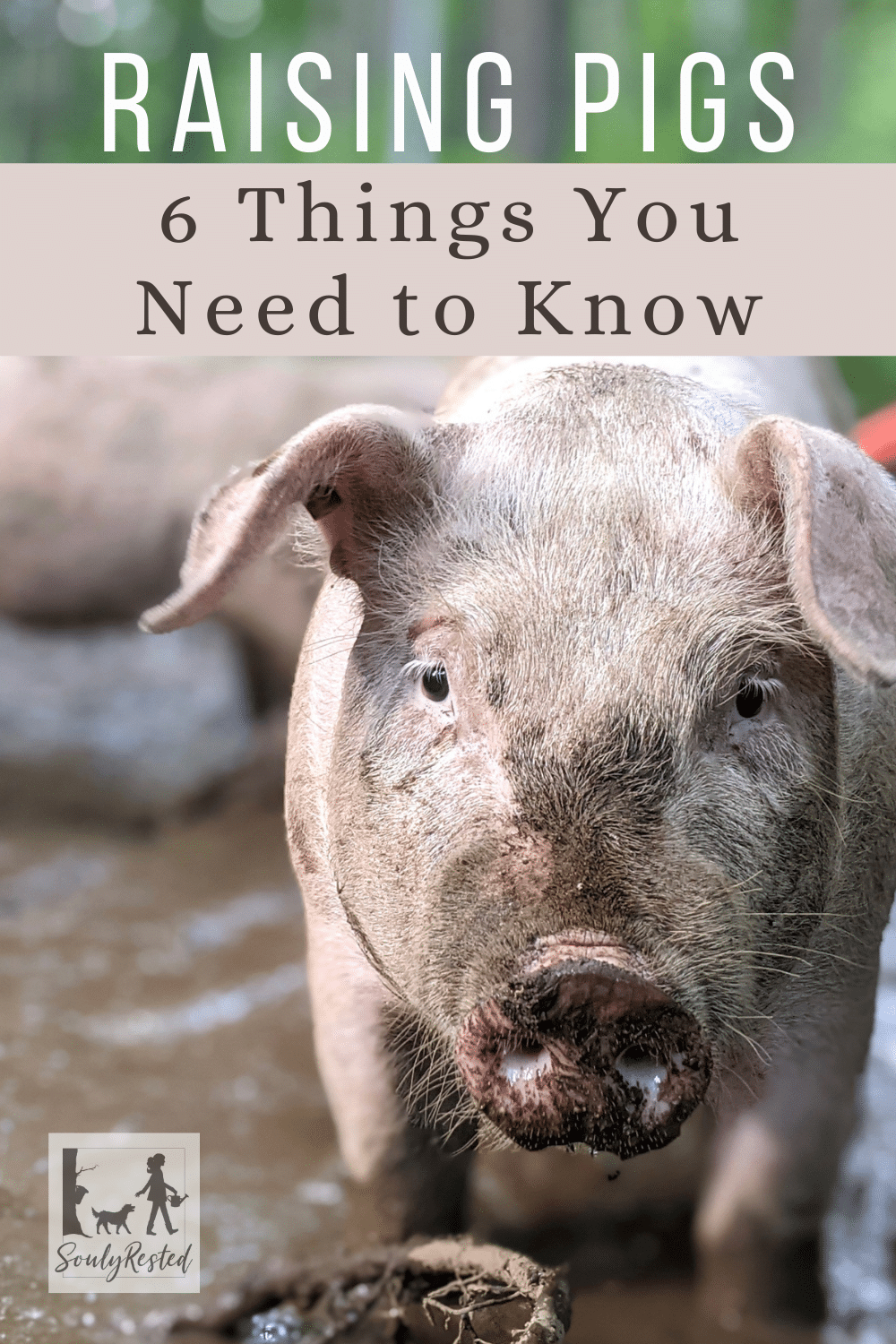





In order to provide the pigs with unlimited access to clean water and reduce the frequency of weekly tub refills, we put stainless steel, automated water nipples on a large lidded tub. Thank you!
Yes! I think I mentioned them in one of my pig posts. That was a game changer for sure!!!
Pingback: Is it OK to raise just one pig Is it OK to raise just one pig | Glassview Farm